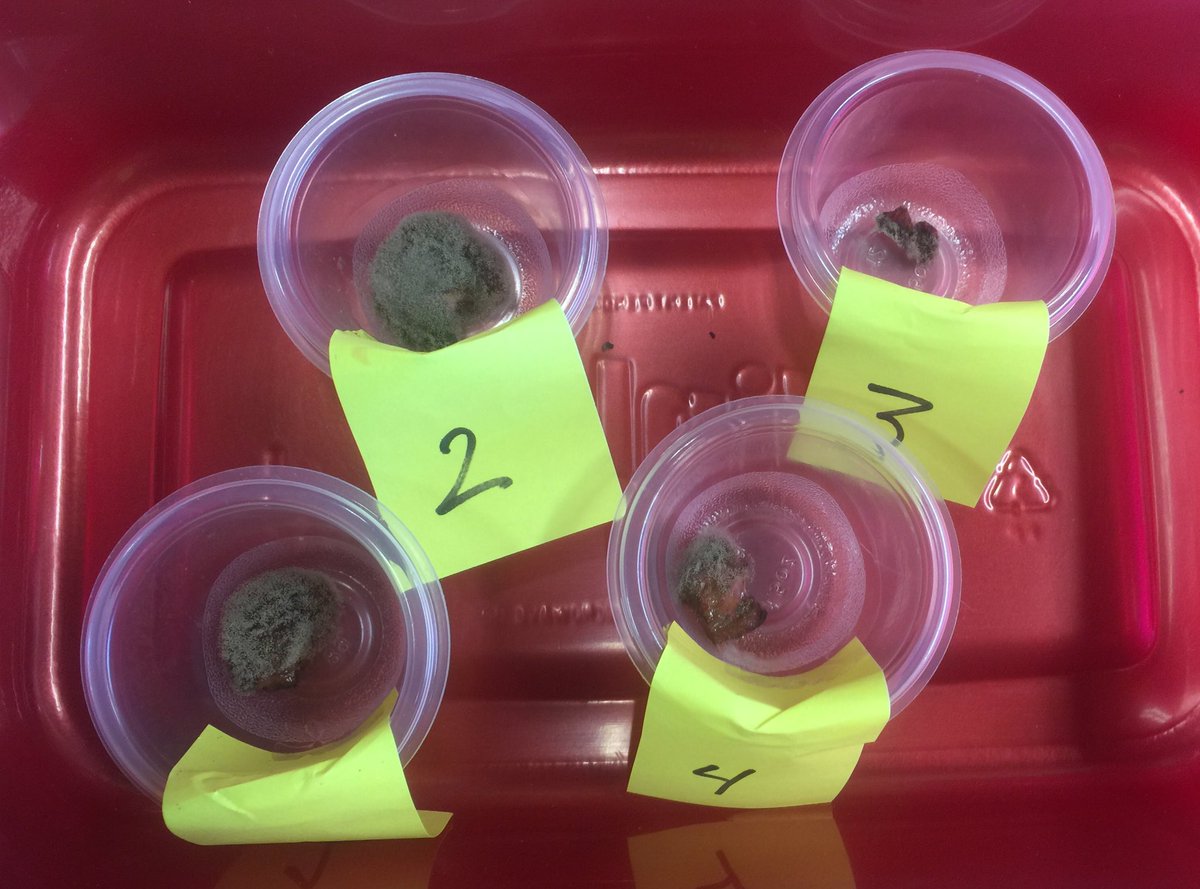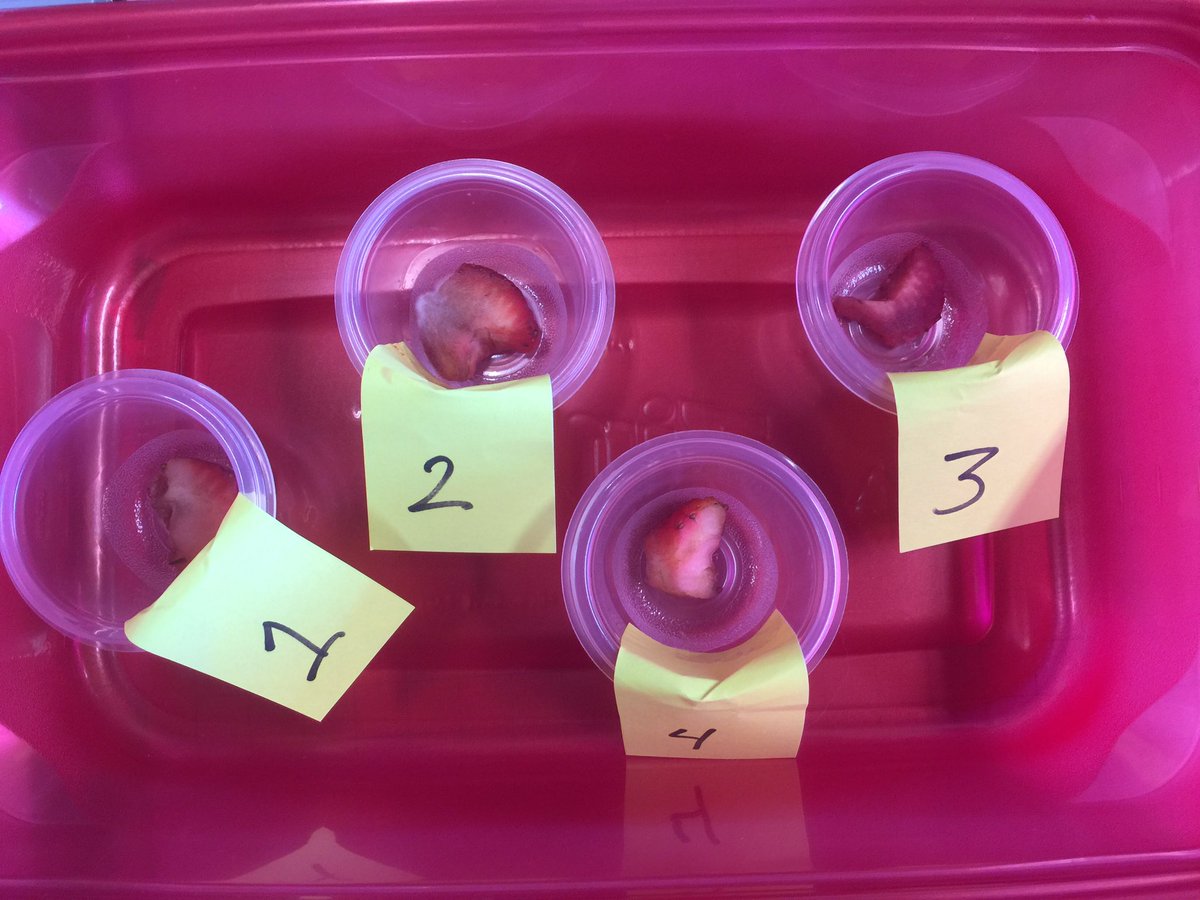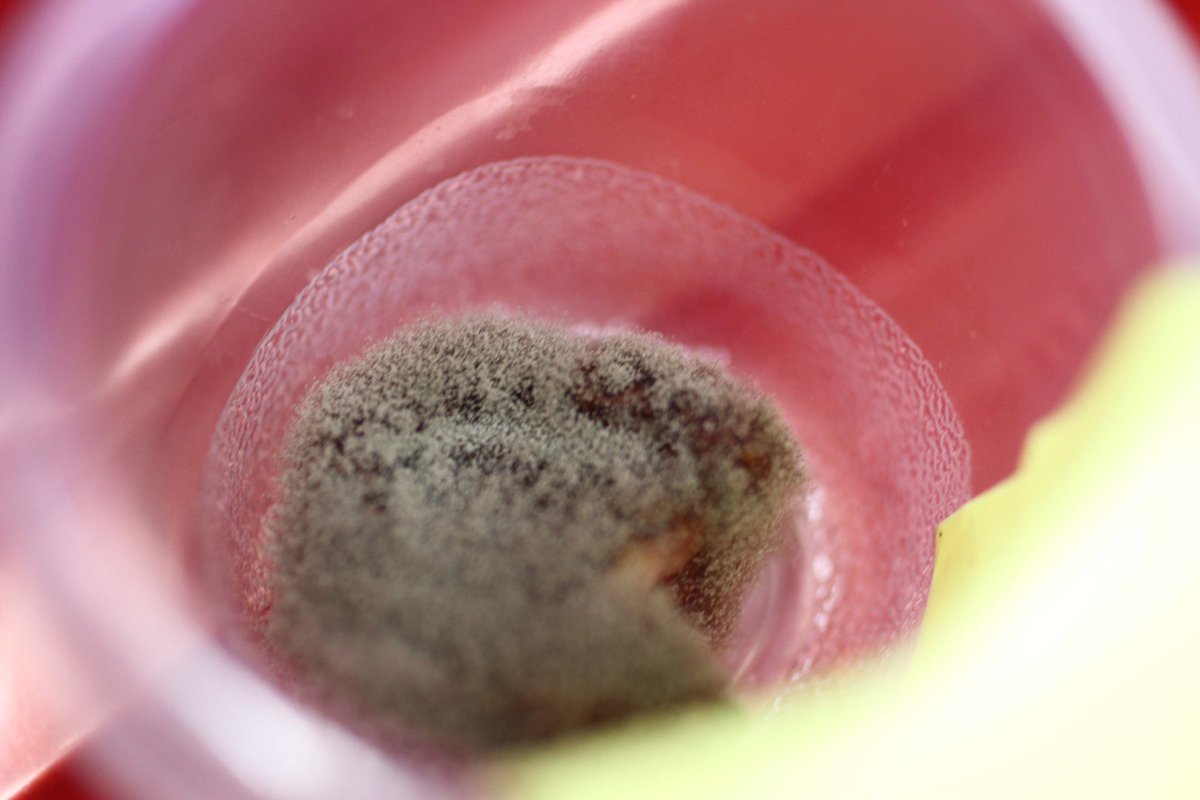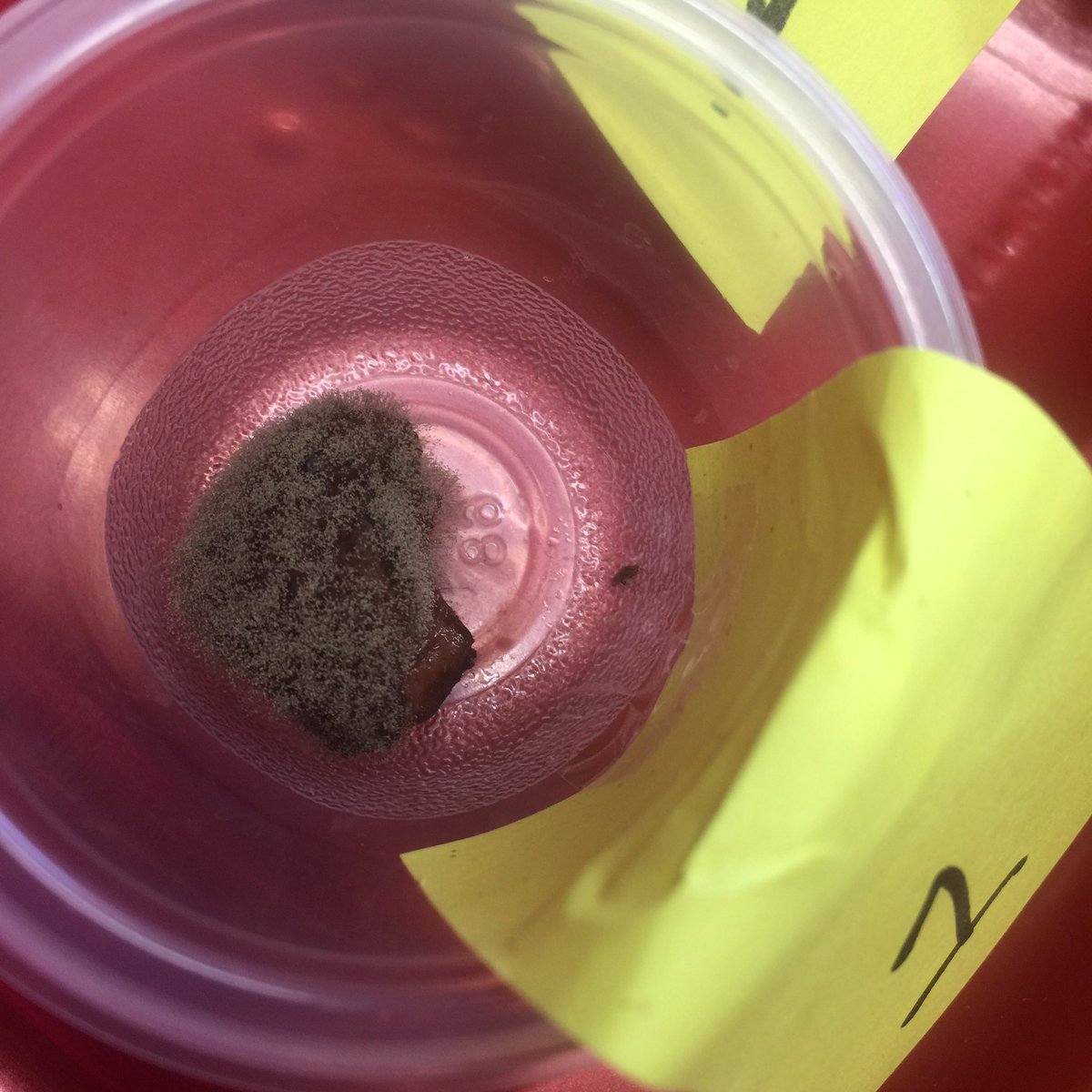I got one of these UV-C sterilizers, knowing full well I had no way of telling whether it actually did anything or not. (The UV lights don’t even come on unless you zip the lid, so you just have to trust that it even fires.) So, today I’m embarking on an experiment.
I cut a strawberry into four pieces and will be testing to see if the UV-C treatment inhibits the growth of mold.
 https://abs.twimg.com/emoji/v2/... draggable="false" alt="1️⃣" title="Keycap digit one" aria-label="Emoji: Keycap digit one"> Dosed with UV-C daily.
https://abs.twimg.com/emoji/v2/... draggable="false" alt="1️⃣" title="Keycap digit one" aria-label="Emoji: Keycap digit one"> Dosed with UV-C daily.
 https://abs.twimg.com/emoji/v2/... draggable="false" alt="2️⃣" title="Keycap digit two" aria-label="Emoji: Keycap digit two"> Dosed once now, not thereafter.
https://abs.twimg.com/emoji/v2/... draggable="false" alt="2️⃣" title="Keycap digit two" aria-label="Emoji: Keycap digit two"> Dosed once now, not thereafter.
 https://abs.twimg.com/emoji/v2/... draggable="false" alt="3️⃣" title="Keycap digit three" aria-label="Emoji: Keycap digit three"> Dosed only if it starts to show mold.
https://abs.twimg.com/emoji/v2/... draggable="false" alt="3️⃣" title="Keycap digit three" aria-label="Emoji: Keycap digit three"> Dosed only if it starts to show mold.
 https://abs.twimg.com/emoji/v2/... draggable="false" alt="4️⃣" title="Keycap digit four" aria-label="Emoji: Keycap digit four"> Never dosed (control).
https://abs.twimg.com/emoji/v2/... draggable="false" alt="4️⃣" title="Keycap digit four" aria-label="Emoji: Keycap digit four"> Never dosed (control).
I believe that the UV lights are coming on. What I’m trying to determine is if the dose is enough to actually inhibit the growth of anything. From what I’ve read, mold is easily killed by UV-C, so it should be pretty obvious if it’s doing anything or not.
Samples are now covered to try and inhibit cross contamination and placed in a warm spot (my garage).
Hypotheses, if the light works:
 https://abs.twimg.com/emoji/v2/... draggable="false" alt="1️⃣" title="Keycap digit one" aria-label="Emoji: Keycap digit one"> No or very little mold.
https://abs.twimg.com/emoji/v2/... draggable="false" alt="1️⃣" title="Keycap digit one" aria-label="Emoji: Keycap digit one"> No or very little mold.
 https://abs.twimg.com/emoji/v2/... draggable="false" alt="2️⃣" title="Keycap digit two" aria-label="Emoji: Keycap digit two"> Mold possible.
https://abs.twimg.com/emoji/v2/... draggable="false" alt="2️⃣" title="Keycap digit two" aria-label="Emoji: Keycap digit two"> Mold possible.
 https://abs.twimg.com/emoji/v2/... draggable="false" alt="3️⃣" title="Keycap digit three" aria-label="Emoji: Keycap digit three"> If mold starts, it will be killed.
https://abs.twimg.com/emoji/v2/... draggable="false" alt="3️⃣" title="Keycap digit three" aria-label="Emoji: Keycap digit three"> If mold starts, it will be killed.
 https://abs.twimg.com/emoji/v2/... draggable="false" alt="4️⃣" title="Keycap digit four" aria-label="Emoji: Keycap digit four"> Most mold growth of the four.
https://abs.twimg.com/emoji/v2/... draggable="false" alt="4️⃣" title="Keycap digit four" aria-label="Emoji: Keycap digit four"> Most mold growth of the four.
Hypotheses, if the light works:
I had a HARD time with science fair as a kid because I never really understood that the point was to try and answer some question about how something worked. I didn’t have enough life experience to know how to frame things in those terms. I just raced paper airplanes every year. https://twitter.com/walternissen/status/1251622287259824128">https://twitter.com/walternis...
I think my sense of curiosity was limited by the feeling that for any given question, either I already knew the answer or it was totally impenetrable. I learned things by trying to make things and failing, rather than by pondering abstract questions and staging experiments.
OK so what’s with these strawberries!! As you will recall, this is what I hypothesized might happen: https://twitter.com/malki/status/1251623949252739072?s=21">https://twitter.com/malki/sta... https://twitter.com/malki/status/1251623949252739072">https://twitter.com/malki/sta...
Here’s what they look like today. A few observations:
- The pieces were all from the same strawberry, but #2 molded first. So maybe it already had some spores on it. The sample size is too small to tell if it’s just coincidence? A real trial would have a lot more samples.
- The pieces were all from the same strawberry, but #2 molded first. So maybe it already had some spores on it. The sample size is too small to tell if it’s just coincidence? A real trial would have a lot more samples.
- #2 molded first, then #1. So an alternate conclusion could be that the UV light broke down the strawberry tissue to make it more fertile for mold growth? It sure doesn’t prove that the UV light was killing mold. Photo: day 2.
- Once I saw the mold on #2, I changed the parameters. The new role of #2 would be to be nuked like 5 times more than #1 to see if the mold would be killed. The problem is that I don’t know if the visible mold is still alive or just possibly, like, skeletons of dead stalks?
- #4 (the only one not being nuked daily) does have mold on it, but not the most mold. I can’t really tell, but it’s possible the mold stalks on #4 are longer? Like maybe mold has grown on the others but is not growing as quickly, or is in fact being harmed/stunted by the light?
- I did see a bug crawling on one of the cups today, so maybe that’s why #3 is so much smaller now? The others are juicy. #3 is dry and rattly. Something else that our small sample size prevents us from attributing to any specific cause.
I don’t know if maybe I should try cleaning the mold off of one of them to see if it regrows? My results are....fuzzy
I buy this explanation (UV sterilization is line of sight only), but also, this is sort of an indictment of this method of sterilization via this device overall? My keys, phone, and other possessions have crevices too. https://twitter.com/greymoth/status/1253869441152176130">https://twitter.com/greymoth/...
I’ll let these samples continue doing whatever they’re doing. Has my evidence concluded that the UV-C device is murdering all the microbes it is exposing itself to, like an avenging angel full of the cleansing power of Heaven’s light? Friends, it has not.

 Read on Twitter
Read on Twitter
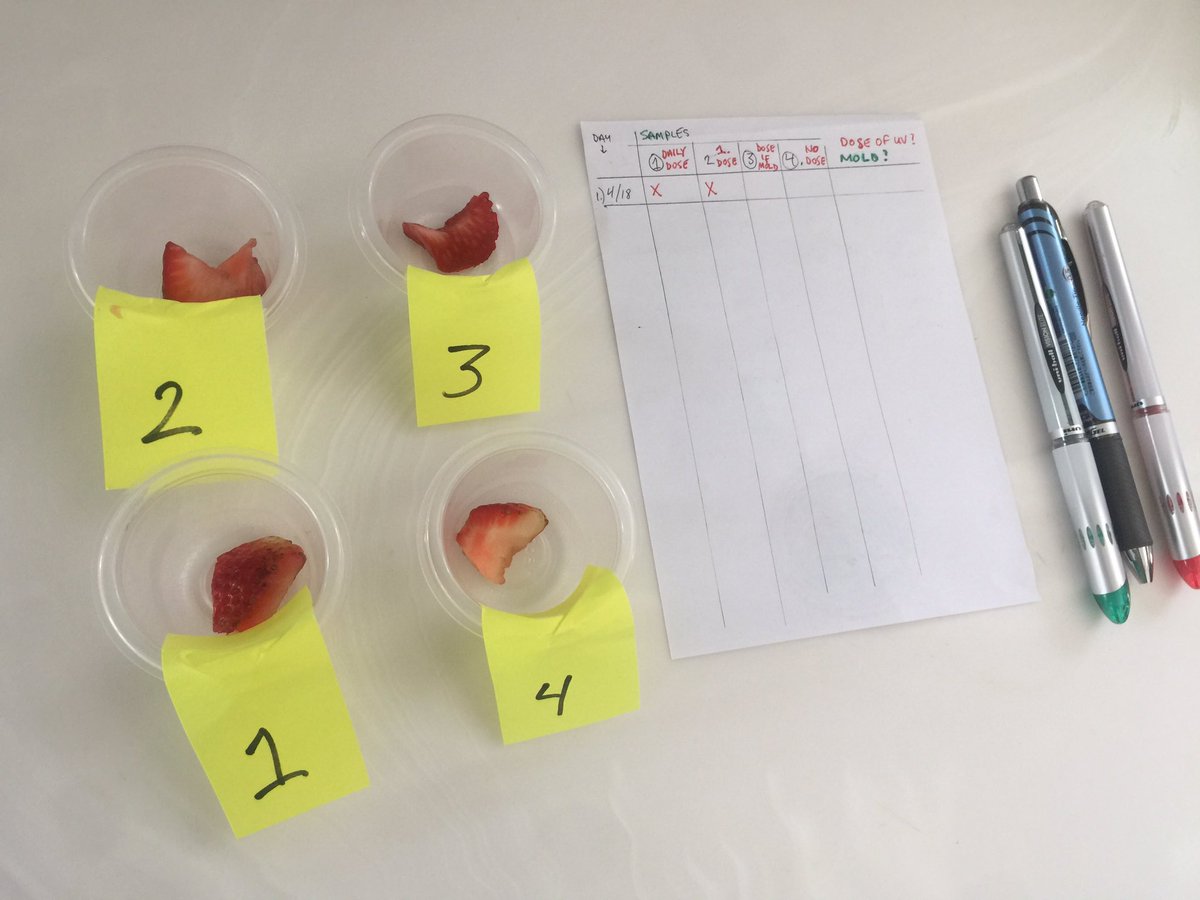 Dosed with UV-C daily.https://abs.twimg.com/emoji/v2/... draggable="false" alt="2️⃣" title="Keycap digit two" aria-label="Emoji: Keycap digit two"> Dosed once now, not thereafter.https://abs.twimg.com/emoji/v2/... draggable="false" alt="3️⃣" title="Keycap digit three" aria-label="Emoji: Keycap digit three"> Dosed only if it starts to show mold.https://abs.twimg.com/emoji/v2/... draggable="false" alt="4️⃣" title="Keycap digit four" aria-label="Emoji: Keycap digit four"> Never dosed (control)." title="I cut a strawberry into four pieces and will be testing to see if the UV-C treatment inhibits the growth of mold.https://abs.twimg.com/emoji/v2/... draggable="false" alt="1️⃣" title="Keycap digit one" aria-label="Emoji: Keycap digit one"> Dosed with UV-C daily.https://abs.twimg.com/emoji/v2/... draggable="false" alt="2️⃣" title="Keycap digit two" aria-label="Emoji: Keycap digit two"> Dosed once now, not thereafter.https://abs.twimg.com/emoji/v2/... draggable="false" alt="3️⃣" title="Keycap digit three" aria-label="Emoji: Keycap digit three"> Dosed only if it starts to show mold.https://abs.twimg.com/emoji/v2/... draggable="false" alt="4️⃣" title="Keycap digit four" aria-label="Emoji: Keycap digit four"> Never dosed (control).">
Dosed with UV-C daily.https://abs.twimg.com/emoji/v2/... draggable="false" alt="2️⃣" title="Keycap digit two" aria-label="Emoji: Keycap digit two"> Dosed once now, not thereafter.https://abs.twimg.com/emoji/v2/... draggable="false" alt="3️⃣" title="Keycap digit three" aria-label="Emoji: Keycap digit three"> Dosed only if it starts to show mold.https://abs.twimg.com/emoji/v2/... draggable="false" alt="4️⃣" title="Keycap digit four" aria-label="Emoji: Keycap digit four"> Never dosed (control)." title="I cut a strawberry into four pieces and will be testing to see if the UV-C treatment inhibits the growth of mold.https://abs.twimg.com/emoji/v2/... draggable="false" alt="1️⃣" title="Keycap digit one" aria-label="Emoji: Keycap digit one"> Dosed with UV-C daily.https://abs.twimg.com/emoji/v2/... draggable="false" alt="2️⃣" title="Keycap digit two" aria-label="Emoji: Keycap digit two"> Dosed once now, not thereafter.https://abs.twimg.com/emoji/v2/... draggable="false" alt="3️⃣" title="Keycap digit three" aria-label="Emoji: Keycap digit three"> Dosed only if it starts to show mold.https://abs.twimg.com/emoji/v2/... draggable="false" alt="4️⃣" title="Keycap digit four" aria-label="Emoji: Keycap digit four"> Never dosed (control).">
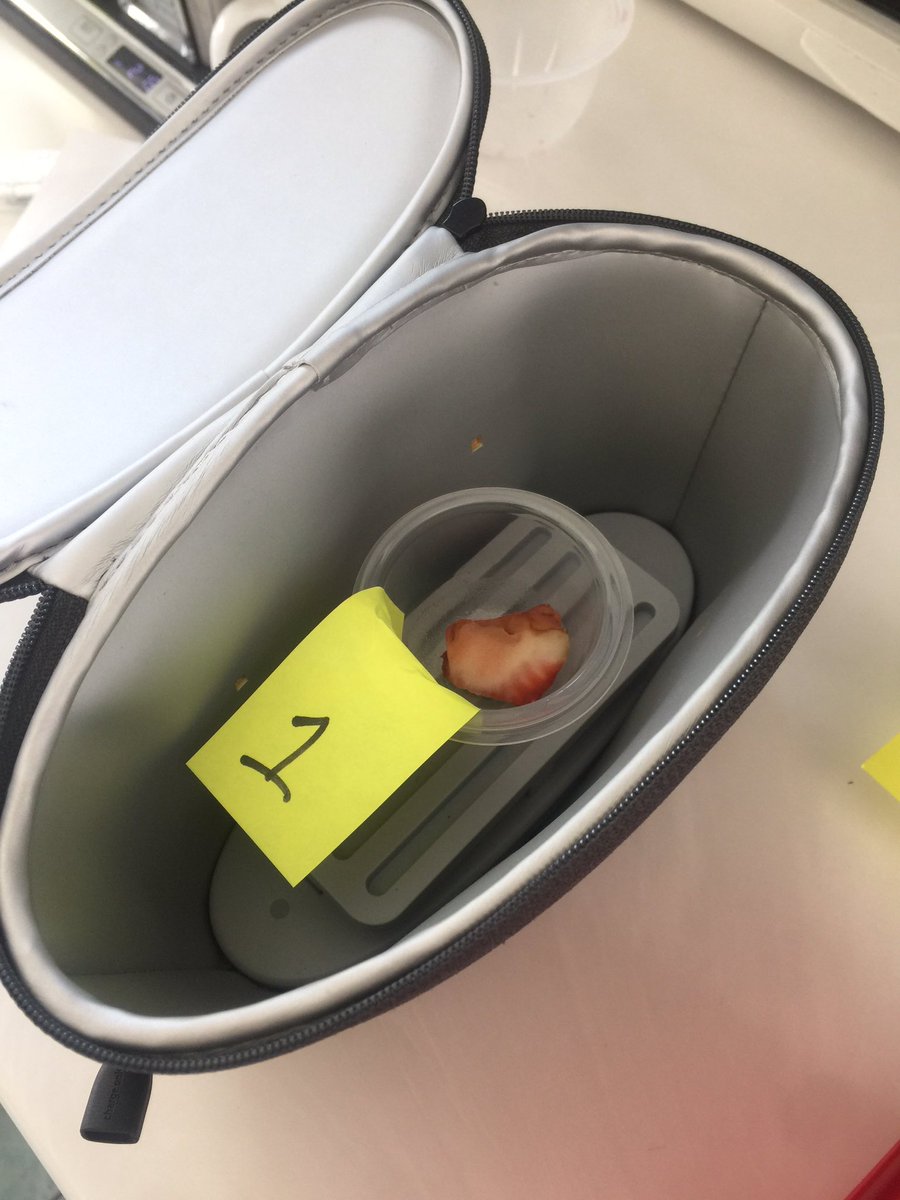 Dosed with UV-C daily.https://abs.twimg.com/emoji/v2/... draggable="false" alt="2️⃣" title="Keycap digit two" aria-label="Emoji: Keycap digit two"> Dosed once now, not thereafter.https://abs.twimg.com/emoji/v2/... draggable="false" alt="3️⃣" title="Keycap digit three" aria-label="Emoji: Keycap digit three"> Dosed only if it starts to show mold.https://abs.twimg.com/emoji/v2/... draggable="false" alt="4️⃣" title="Keycap digit four" aria-label="Emoji: Keycap digit four"> Never dosed (control)." title="I cut a strawberry into four pieces and will be testing to see if the UV-C treatment inhibits the growth of mold.https://abs.twimg.com/emoji/v2/... draggable="false" alt="1️⃣" title="Keycap digit one" aria-label="Emoji: Keycap digit one"> Dosed with UV-C daily.https://abs.twimg.com/emoji/v2/... draggable="false" alt="2️⃣" title="Keycap digit two" aria-label="Emoji: Keycap digit two"> Dosed once now, not thereafter.https://abs.twimg.com/emoji/v2/... draggable="false" alt="3️⃣" title="Keycap digit three" aria-label="Emoji: Keycap digit three"> Dosed only if it starts to show mold.https://abs.twimg.com/emoji/v2/... draggable="false" alt="4️⃣" title="Keycap digit four" aria-label="Emoji: Keycap digit four"> Never dosed (control).">
Dosed with UV-C daily.https://abs.twimg.com/emoji/v2/... draggable="false" alt="2️⃣" title="Keycap digit two" aria-label="Emoji: Keycap digit two"> Dosed once now, not thereafter.https://abs.twimg.com/emoji/v2/... draggable="false" alt="3️⃣" title="Keycap digit three" aria-label="Emoji: Keycap digit three"> Dosed only if it starts to show mold.https://abs.twimg.com/emoji/v2/... draggable="false" alt="4️⃣" title="Keycap digit four" aria-label="Emoji: Keycap digit four"> Never dosed (control)." title="I cut a strawberry into four pieces and will be testing to see if the UV-C treatment inhibits the growth of mold.https://abs.twimg.com/emoji/v2/... draggable="false" alt="1️⃣" title="Keycap digit one" aria-label="Emoji: Keycap digit one"> Dosed with UV-C daily.https://abs.twimg.com/emoji/v2/... draggable="false" alt="2️⃣" title="Keycap digit two" aria-label="Emoji: Keycap digit two"> Dosed once now, not thereafter.https://abs.twimg.com/emoji/v2/... draggable="false" alt="3️⃣" title="Keycap digit three" aria-label="Emoji: Keycap digit three"> Dosed only if it starts to show mold.https://abs.twimg.com/emoji/v2/... draggable="false" alt="4️⃣" title="Keycap digit four" aria-label="Emoji: Keycap digit four"> Never dosed (control).">
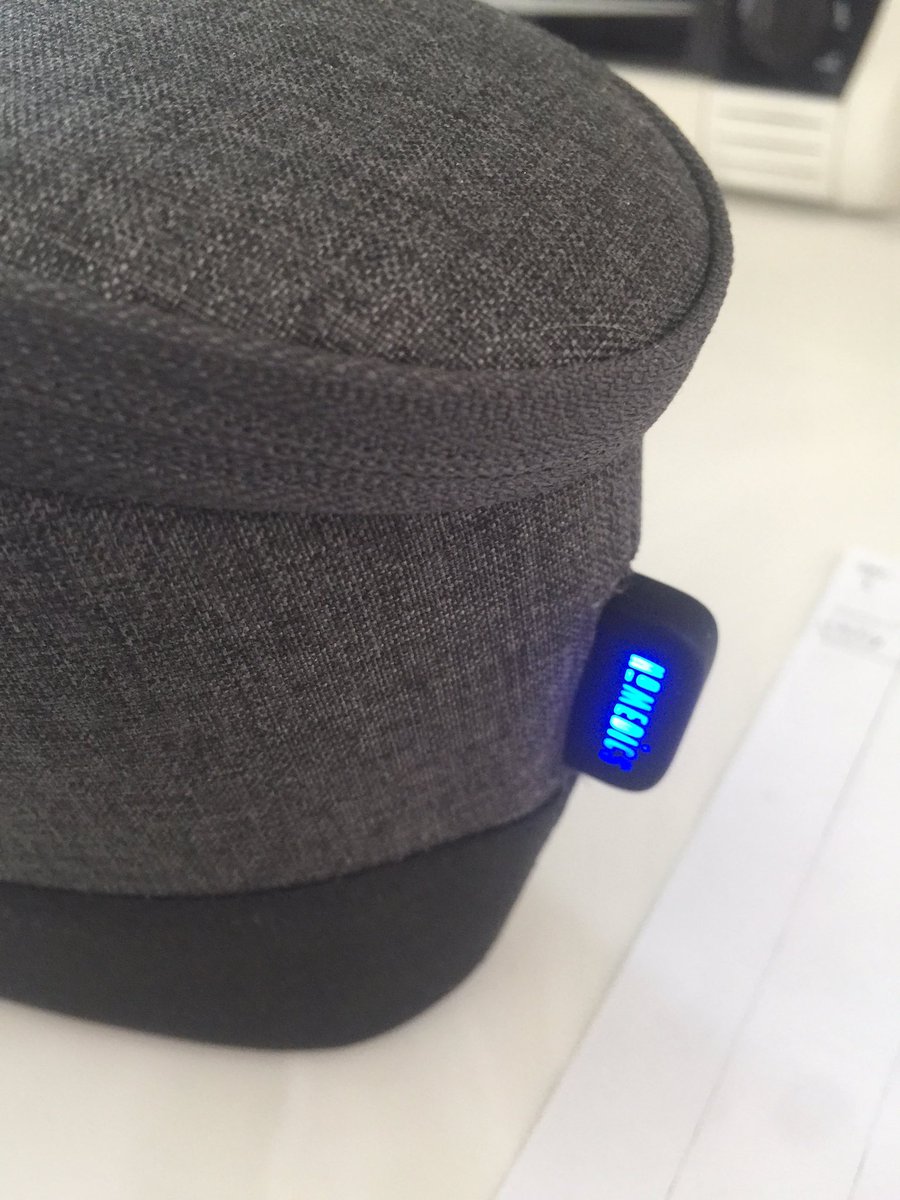 Dosed with UV-C daily.https://abs.twimg.com/emoji/v2/... draggable="false" alt="2️⃣" title="Keycap digit two" aria-label="Emoji: Keycap digit two"> Dosed once now, not thereafter.https://abs.twimg.com/emoji/v2/... draggable="false" alt="3️⃣" title="Keycap digit three" aria-label="Emoji: Keycap digit three"> Dosed only if it starts to show mold.https://abs.twimg.com/emoji/v2/... draggable="false" alt="4️⃣" title="Keycap digit four" aria-label="Emoji: Keycap digit four"> Never dosed (control)." title="I cut a strawberry into four pieces and will be testing to see if the UV-C treatment inhibits the growth of mold.https://abs.twimg.com/emoji/v2/... draggable="false" alt="1️⃣" title="Keycap digit one" aria-label="Emoji: Keycap digit one"> Dosed with UV-C daily.https://abs.twimg.com/emoji/v2/... draggable="false" alt="2️⃣" title="Keycap digit two" aria-label="Emoji: Keycap digit two"> Dosed once now, not thereafter.https://abs.twimg.com/emoji/v2/... draggable="false" alt="3️⃣" title="Keycap digit three" aria-label="Emoji: Keycap digit three"> Dosed only if it starts to show mold.https://abs.twimg.com/emoji/v2/... draggable="false" alt="4️⃣" title="Keycap digit four" aria-label="Emoji: Keycap digit four"> Never dosed (control).">
Dosed with UV-C daily.https://abs.twimg.com/emoji/v2/... draggable="false" alt="2️⃣" title="Keycap digit two" aria-label="Emoji: Keycap digit two"> Dosed once now, not thereafter.https://abs.twimg.com/emoji/v2/... draggable="false" alt="3️⃣" title="Keycap digit three" aria-label="Emoji: Keycap digit three"> Dosed only if it starts to show mold.https://abs.twimg.com/emoji/v2/... draggable="false" alt="4️⃣" title="Keycap digit four" aria-label="Emoji: Keycap digit four"> Never dosed (control)." title="I cut a strawberry into four pieces and will be testing to see if the UV-C treatment inhibits the growth of mold.https://abs.twimg.com/emoji/v2/... draggable="false" alt="1️⃣" title="Keycap digit one" aria-label="Emoji: Keycap digit one"> Dosed with UV-C daily.https://abs.twimg.com/emoji/v2/... draggable="false" alt="2️⃣" title="Keycap digit two" aria-label="Emoji: Keycap digit two"> Dosed once now, not thereafter.https://abs.twimg.com/emoji/v2/... draggable="false" alt="3️⃣" title="Keycap digit three" aria-label="Emoji: Keycap digit three"> Dosed only if it starts to show mold.https://abs.twimg.com/emoji/v2/... draggable="false" alt="4️⃣" title="Keycap digit four" aria-label="Emoji: Keycap digit four"> Never dosed (control).">
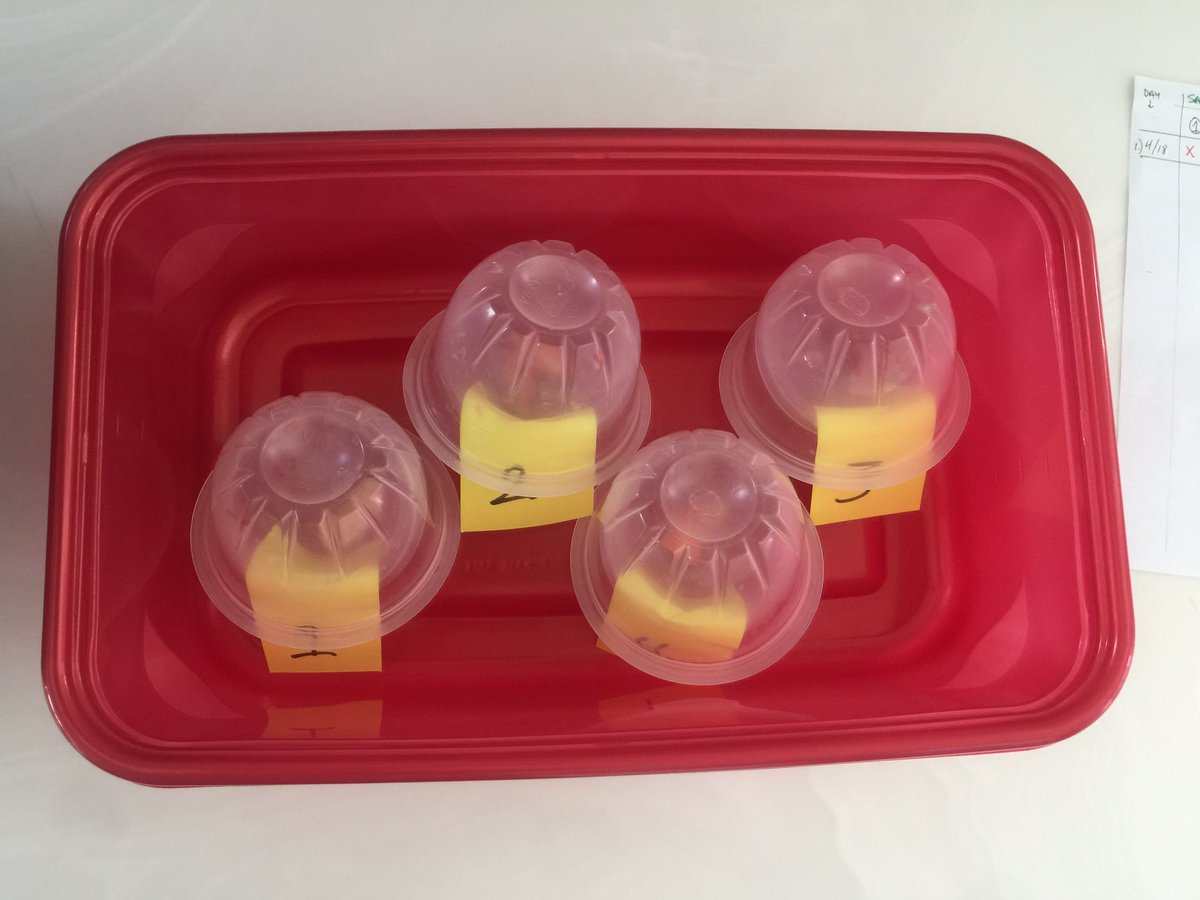 No or very little mold.https://abs.twimg.com/emoji/v2/... draggable="false" alt="2️⃣" title="Keycap digit two" aria-label="Emoji: Keycap digit two"> Mold possible.https://abs.twimg.com/emoji/v2/... draggable="false" alt="3️⃣" title="Keycap digit three" aria-label="Emoji: Keycap digit three"> If mold starts, it will be killed.https://abs.twimg.com/emoji/v2/... draggable="false" alt="4️⃣" title="Keycap digit four" aria-label="Emoji: Keycap digit four"> Most mold growth of the four." title="Samples are now covered to try and inhibit cross contamination and placed in a warm spot (my garage).Hypotheses, if the light works:https://abs.twimg.com/emoji/v2/... draggable="false" alt="1️⃣" title="Keycap digit one" aria-label="Emoji: Keycap digit one"> No or very little mold.https://abs.twimg.com/emoji/v2/... draggable="false" alt="2️⃣" title="Keycap digit two" aria-label="Emoji: Keycap digit two"> Mold possible.https://abs.twimg.com/emoji/v2/... draggable="false" alt="3️⃣" title="Keycap digit three" aria-label="Emoji: Keycap digit three"> If mold starts, it will be killed.https://abs.twimg.com/emoji/v2/... draggable="false" alt="4️⃣" title="Keycap digit four" aria-label="Emoji: Keycap digit four"> Most mold growth of the four.">
No or very little mold.https://abs.twimg.com/emoji/v2/... draggable="false" alt="2️⃣" title="Keycap digit two" aria-label="Emoji: Keycap digit two"> Mold possible.https://abs.twimg.com/emoji/v2/... draggable="false" alt="3️⃣" title="Keycap digit three" aria-label="Emoji: Keycap digit three"> If mold starts, it will be killed.https://abs.twimg.com/emoji/v2/... draggable="false" alt="4️⃣" title="Keycap digit four" aria-label="Emoji: Keycap digit four"> Most mold growth of the four." title="Samples are now covered to try and inhibit cross contamination and placed in a warm spot (my garage).Hypotheses, if the light works:https://abs.twimg.com/emoji/v2/... draggable="false" alt="1️⃣" title="Keycap digit one" aria-label="Emoji: Keycap digit one"> No or very little mold.https://abs.twimg.com/emoji/v2/... draggable="false" alt="2️⃣" title="Keycap digit two" aria-label="Emoji: Keycap digit two"> Mold possible.https://abs.twimg.com/emoji/v2/... draggable="false" alt="3️⃣" title="Keycap digit three" aria-label="Emoji: Keycap digit three"> If mold starts, it will be killed.https://abs.twimg.com/emoji/v2/... draggable="false" alt="4️⃣" title="Keycap digit four" aria-label="Emoji: Keycap digit four"> Most mold growth of the four.">
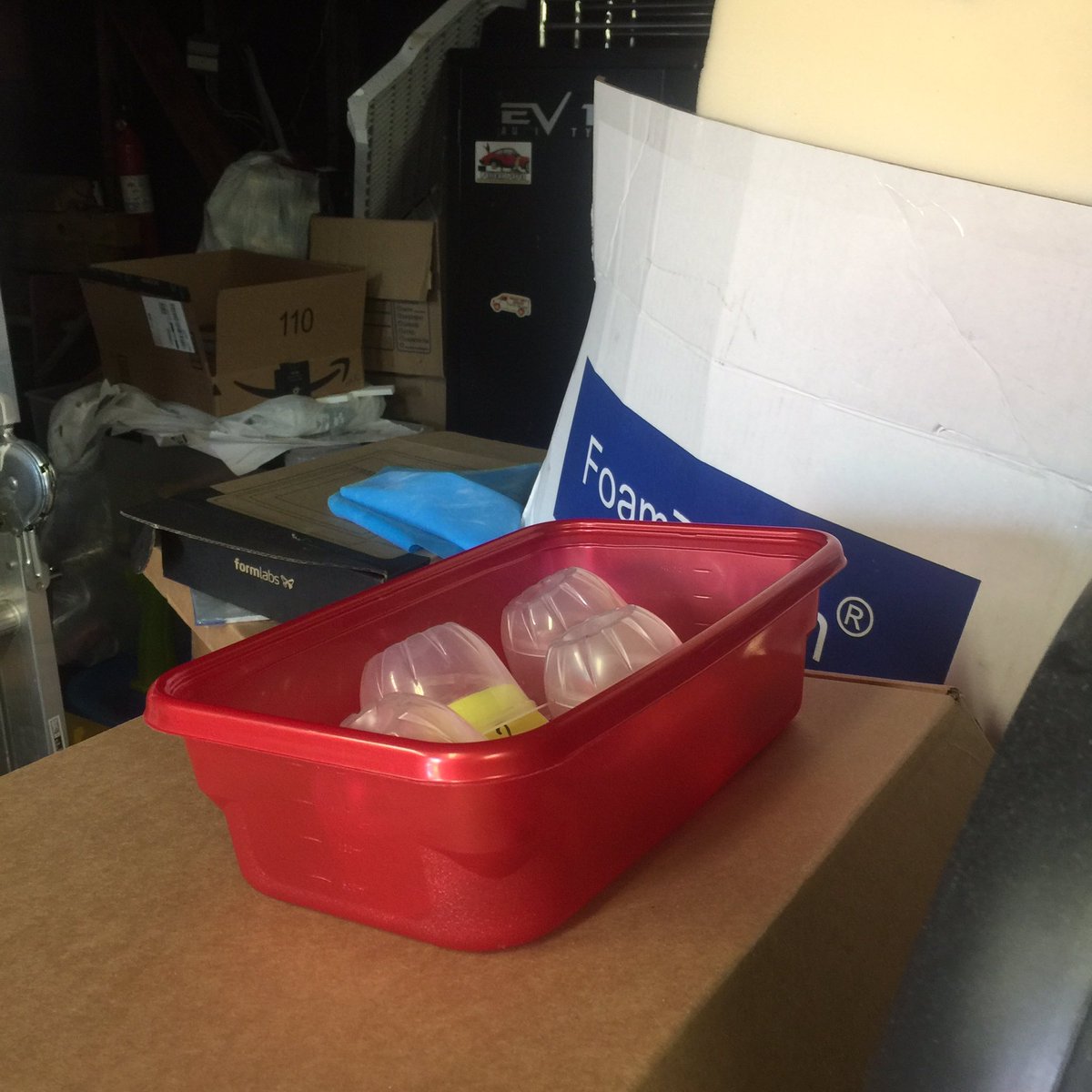 No or very little mold.https://abs.twimg.com/emoji/v2/... draggable="false" alt="2️⃣" title="Keycap digit two" aria-label="Emoji: Keycap digit two"> Mold possible.https://abs.twimg.com/emoji/v2/... draggable="false" alt="3️⃣" title="Keycap digit three" aria-label="Emoji: Keycap digit three"> If mold starts, it will be killed.https://abs.twimg.com/emoji/v2/... draggable="false" alt="4️⃣" title="Keycap digit four" aria-label="Emoji: Keycap digit four"> Most mold growth of the four." title="Samples are now covered to try and inhibit cross contamination and placed in a warm spot (my garage).Hypotheses, if the light works:https://abs.twimg.com/emoji/v2/... draggable="false" alt="1️⃣" title="Keycap digit one" aria-label="Emoji: Keycap digit one"> No or very little mold.https://abs.twimg.com/emoji/v2/... draggable="false" alt="2️⃣" title="Keycap digit two" aria-label="Emoji: Keycap digit two"> Mold possible.https://abs.twimg.com/emoji/v2/... draggable="false" alt="3️⃣" title="Keycap digit three" aria-label="Emoji: Keycap digit three"> If mold starts, it will be killed.https://abs.twimg.com/emoji/v2/... draggable="false" alt="4️⃣" title="Keycap digit four" aria-label="Emoji: Keycap digit four"> Most mold growth of the four.">
No or very little mold.https://abs.twimg.com/emoji/v2/... draggable="false" alt="2️⃣" title="Keycap digit two" aria-label="Emoji: Keycap digit two"> Mold possible.https://abs.twimg.com/emoji/v2/... draggable="false" alt="3️⃣" title="Keycap digit three" aria-label="Emoji: Keycap digit three"> If mold starts, it will be killed.https://abs.twimg.com/emoji/v2/... draggable="false" alt="4️⃣" title="Keycap digit four" aria-label="Emoji: Keycap digit four"> Most mold growth of the four." title="Samples are now covered to try and inhibit cross contamination and placed in a warm spot (my garage).Hypotheses, if the light works:https://abs.twimg.com/emoji/v2/... draggable="false" alt="1️⃣" title="Keycap digit one" aria-label="Emoji: Keycap digit one"> No or very little mold.https://abs.twimg.com/emoji/v2/... draggable="false" alt="2️⃣" title="Keycap digit two" aria-label="Emoji: Keycap digit two"> Mold possible.https://abs.twimg.com/emoji/v2/... draggable="false" alt="3️⃣" title="Keycap digit three" aria-label="Emoji: Keycap digit three"> If mold starts, it will be killed.https://abs.twimg.com/emoji/v2/... draggable="false" alt="4️⃣" title="Keycap digit four" aria-label="Emoji: Keycap digit four"> Most mold growth of the four.">
